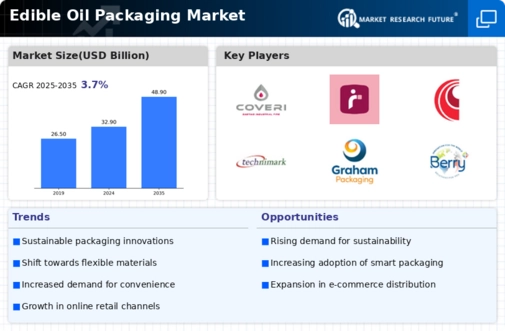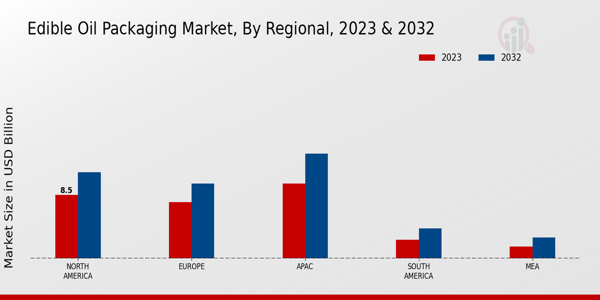The Edible Oil Packaging Market has been evolving rapidly, driven by a growing awareness of sustainable practices and the increasing demand for convenient, user-friendly packaging solutions. With the rising consumption of edible oils across various regions, the competition in this market has intensified, leading to innovative packaging designs, materials, and technologies. Companies are focusing on enhancing the shelf life of their products while also ensuring that their packaging meets the aesthetic and functional needs of consumers. As a result, brands that can successfully balance these elements are positioned to thrive in the competitive landscape.
The emphasis on sustainability has further influenced the market dynamics, prompting companies to invest in eco-friendly packaging solutions that reduce environmental impact while still maintaining product quality.Sonoco Products has established a strong presence in the Edible Oil Packaging Market by leveraging its extensive experience in the packaging industry and a deep understanding of consumer needs. The company is recognized for its commitment to quality and innovation, offering a range of packaging solutions that cater specifically to edible oils.
Sonoco Products excels in designing user-friendly packaging that not only preserves the integrity of the oil but also appeals to consumers through attractive aesthetics. Their strength lies in their ability to adapt and innovate in response to market trends, as well as their focus on sustainability by embracing eco-friendly materials and practices.
This approach not only enhances customer satisfaction but also positions Sonoco Products as a preferred partner for businesses seeking reliable and effective packaging solutions in the edible oil sector.Coveris has also made significant contributions to the Edible Oil Packaging Market through its innovative packaging solutions tailored to meet the needs of the edible oil sector. With a strong commitment to sustainability, Coveris focuses on developing flexible packaging options that are both functional and environmentally conscious. The company offers a variety of products designed to enhance convenience for consumers, including easy-to-reseal and recyclable options that cater to modern consumption habits.
Coveris stands out for its advanced technology and efficient manufacturing processes, enabling them to deliver high-quality packaging solutions at competitive prices. The company’s extensive expertise in flexible packaging ensures that their products not only safeguard the freshness and taste of edible oils but also align with the growing demand for sustainable practices within the industry.






















